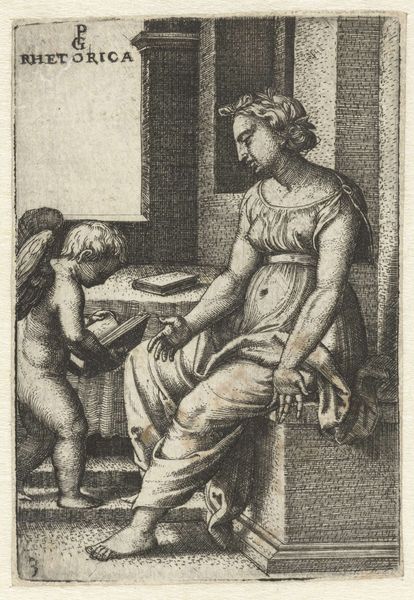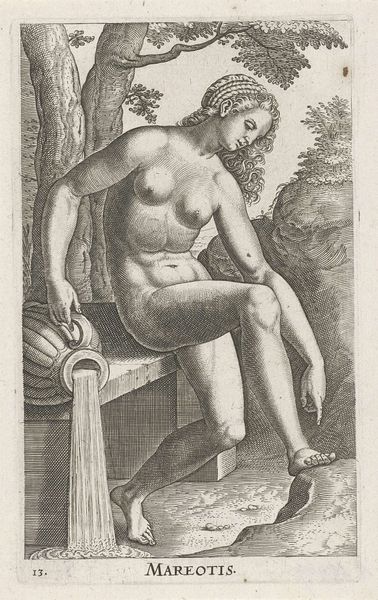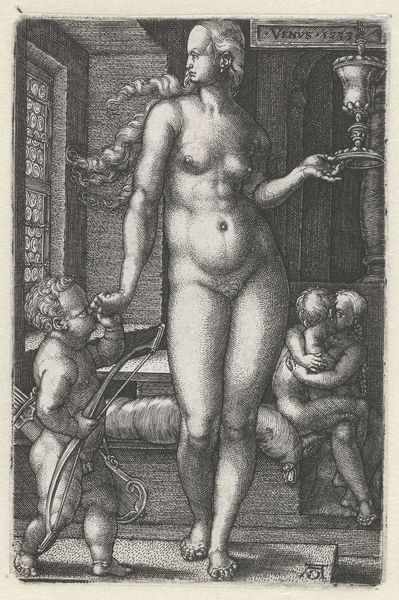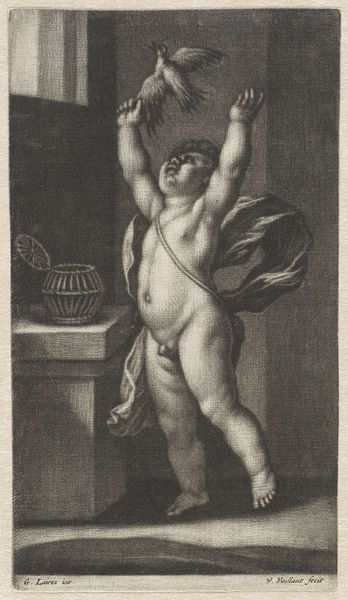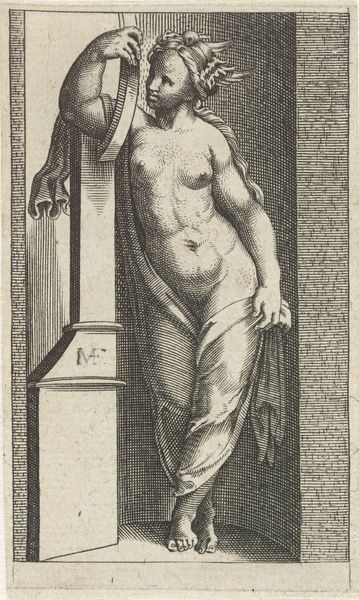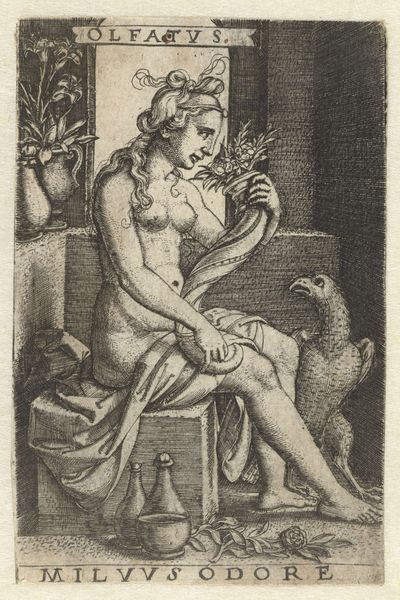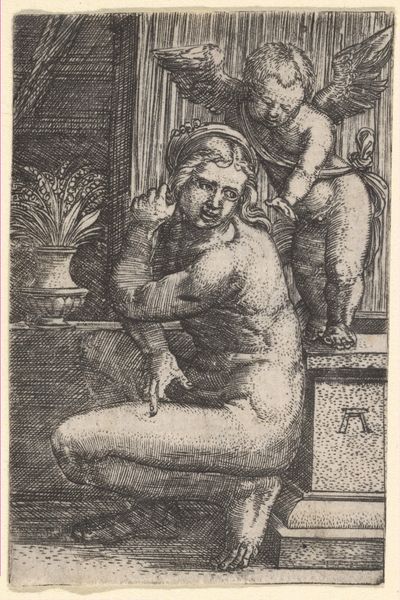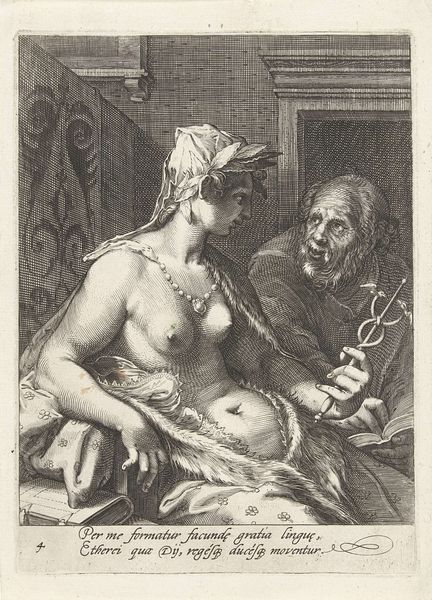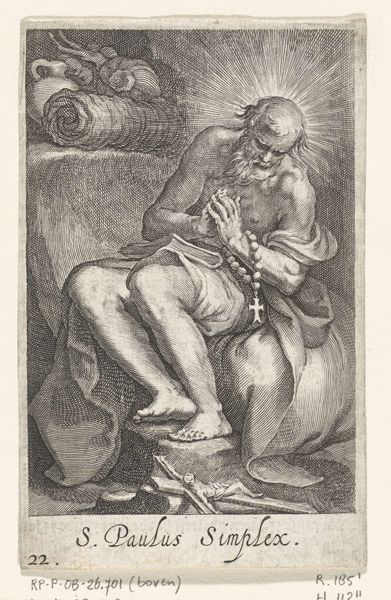
print, engraving
# print
#
figuration
#
history-painting
#
northern-renaissance
#
nude
#
engraving
Dimensions: height 97 mm, width 67 mm
Copyright: Rijks Museum: Open Domain
Hans Brosamer created this engraving of Lucretia in 1537. Engraving is an intaglio process, meaning the image is cut into a surface. In this case, a metal plate. Brosamer would have used a tool called a burin to manually carve the lines that define the image. Ink is then applied to the plate, filling the engraved lines, and the surface is wiped clean. Finally, paper is pressed onto the plate, transferring the ink and creating the print. The distinct character of the engraved line gives the print its particular visual quality. Look closely, and you can see how the varying depth and thickness of the lines create shading and texture, bringing Lucretia’s tragic story to life. The medium itself, with its capacity for replication, allowed for the wide dissemination of this moralizing tale. Prints like this occupy an interesting place, as they demanded artistry but also lent themselves to industrialization. Appreciating the craft involved, and the social context, enriches our understanding of works like this, challenging any strict divide between art and design.
Comments
No comments
Be the first to comment and join the conversation on the ultimate creative platform.
